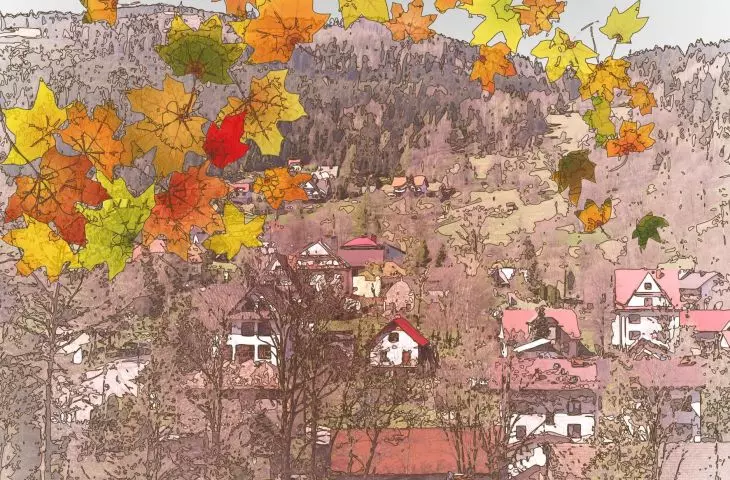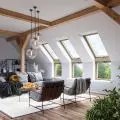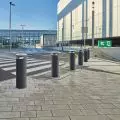rural old - new green deal
These considerations about rural areas, bring up the thought that maybe it's time to change the topic of the conversation about high- and low-tech and take up the topic of ecological country-tech and rural green order. For now, our attention is basically exclusively from an urban perspective, awarding LEED, BREEM, etc. certifications, buying organic food and organic products saturated with dense advertising bordering on greenwashing. We promote architecture with facades of wooden slats covering a thick carpet of rockwool, with de facto artificial greenery on roofs. There are exotic ideas of greenhouses on high-rise apartment blocks and urban farms on the terraces of developer housing. Realizations resembling Hobbit houses from film adaptations of Tolkien's novels are presented as superecological.
Karl Marx claimed that the proletarian revolution would break out in the most developed capitalist countries. His thesis was challenged by Vladimir Lenin, who believed that the revolution would break out in the weakest capitalist country, and he was right. Following this line and recognizing that the Green Deal and the New European Bauhaus are the coming modern revolution, it may be worth recalling Rem Koolhaas' slogan "I am interested in everything that is not urban."
Non-urban areas, including rural areas, occupy 93% of Poland's territory, and are inhabited by (and this value has been stable for thirty years) 40% of the country's population. It is far easier to conduct a philosophy of green governance and sustainable development in these areas than in cities, where the paradigms of liberalism, increased competitiveness and territorial sprawl still reign as dominant narratives. Such a thesis may seem absurd and lacking in logic, but there are compelling reasons behind it.



icicles
© Piotr Średniawa
An interesting and seriously thought-provoking phenomenon was brought to rural areas by the pandemic. While it completely changed the functioning of cities, and their residents were severely affected by more or less drastic restrictions, in rural areas practically the only change was the closure of schools and the acute learning difficulties for children associated with limited access to the Internet. Other areas of life and work functioned as if there was no epidemic threat, even though covid affected a relatively large number of residents here as well. Likewise, something previously overlooked, the countryside shows far greater resilience to the inevitable financial crises and speculative bubbles, or the now-forgotten shortages of foodstuffs in the 1980s. This stability, also read as a backwardness of civilization, has resulted in thousands of family-owned micro-businesses during the transition period as we move away from agricultural and livestock production. Despite the spatial chaos, the small scale of development does not give the impression of oppressiveness, and even a small spatial intervention improves the quality of space disproportionately. This rationale leads to the thesis that the Green Deal paradigm should begin with these areas, using local social capital, also based on traditional functioning in an agricultural and green landscape. This shift in goals and ideas - challenging the uncontrolled continuous growth, escalating mindless consumer model - if it is to yield positive results, must be based on sustainable, local conditions, not the creation of utopian ideas subordinated to current fashion and politically correct trends. So far, the topic of the countryside and space that is not urban is marginal both in the teaching at architectural universities and in design practice, focused on issues of metropolization of larger urban centers. I know many architects, but none whose work is entirely devoted to rural areas. As a result, as a professional community we are to some extent helpless in the face of the problems of shaping this also changing space, considering its quality to be of little importance. We are unable to provide answers on how to intervene in poorly known spaces, avoiding the parachute landing effect. An important signal heralding change is the notice of the Polish countryside in the presentation of the PROLOG +1 group at this year's Venice Architecture Biennale.
A difficult attempt should be made to discuss and then seek solutions to contemporary problems in local, common architecture and local human relations. It is worth recalling Paul Gauguin's painting "Where did we come from? Who are we? Where are we going?" exhibited at the Museum of Fine Arts in Boston, and perhaps paint a paraphrase of it in the native landscape of the Polish countryside.




















